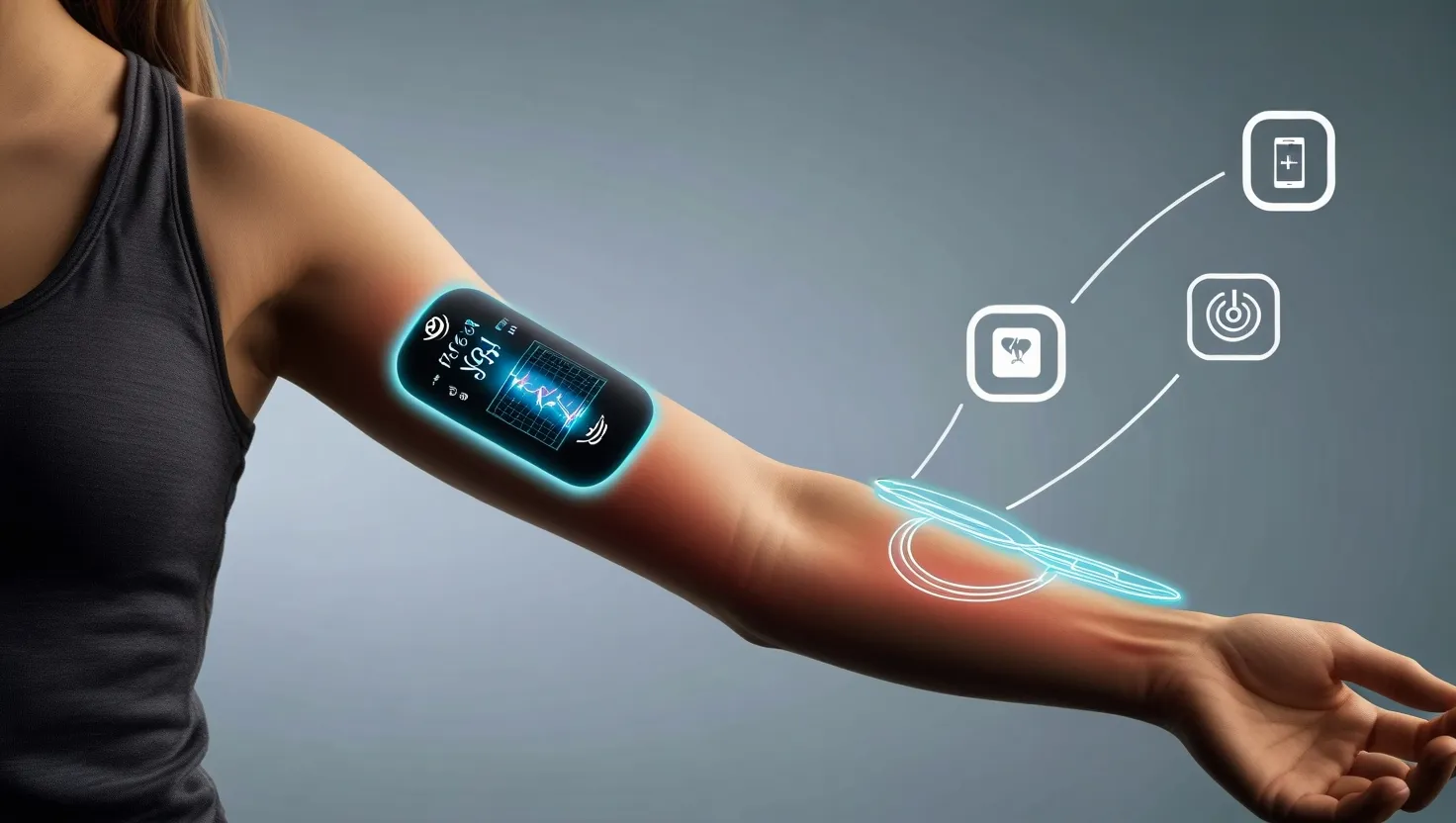In the ever-evolving landscape of technology and healthcare, a fascinating innovation is emerging that blurs the lines between body art and medical monitoring: bioelectronic tattoos. These temporary tattoos are not just a new form of self-expression but also powerful tools for tracking our health, delivering medication, and even connecting us to our smartphones.
The concept of tattoos has been around for over 5,000 years, originating with the Egyptians who believed they could ward off illnesses. Fast forward to the present, and we see a radical transformation in what tattoos can do. Bioelectronic tattoos are engineered to detect fever, certain infections, and physiological anomalies, while also remotely monitoring vital signs like blood pressure and temperature. Unlike traditional tattoos, these devices don’t require needles; instead, they are small patches made from polymeric materials that can deform or wrinkle like our skin without sustaining damage.
One of the most intriguing aspects of bioelectronic tattoos is their ability to monitor health variables in real-time. For instance, a project at the Massachusetts Institute of Technology (MIT) and Harvard has developed tattoo ink that changes color based on blood glucose, sodium, and pH levels. This technology, part of the Dermal Abyss project, allows individuals to monitor their health without the need for invasive blood tests. A tattoo designed to track glucose levels, for example, would change color from blue to brown as the person’s blood sugar level rises, providing immediate feedback.
These tattoos are more than just health monitors; they are also multifunctional sensors that can perform medical tests such as electroencephalograms or electrocardiograms. They can track sports activity, sleep patterns, heart rates, and even incorporate GPS tracking, which is particularly beneficial for individuals with dementia or Alzheimer’s. The integration of technologies like Near Field Communication (NFC) and radio-frequency wireless technology enables these devices to transmit, receive, and collect information seamlessly.
The potential applications of bioelectronic tattoos extend far beyond healthcare. They could be used in home automation to control devices and appliances, and even in wireless payment systems. Microsoft founder Bill Gates has expressed his belief that these tattoos could eventually replace mobile phones due to their convenience and versatility.
From a technological standpoint, these tattoos are a marvel. They use flexible electronics that have intimate contact with the skin, allowing for the direct monitoring of biological signals through the epidermal layer. This close contact enables the detection of chemical and physical biological signals that might be limited with traditional wearables like smartwatches. The tattoos are also designed to be comfortable and semi-permanent, with some demonstrated to be stable in performance for over a week of continuous use.
The fabrication of these devices involves advanced materials and engineering. They are crafted from biologically compatible, flexible materials that can be transferred to the skin or directly printed onto the epidermis. The system includes supporting electronics for control and data transmission, diagnostic sensors to measure mechanical and chemical changes, and therapeutics for drug delivery. This holistic approach makes bioelectronic tattoos a promising solution for real-time theragnostics, combining the monitoring of biological signals with the timely delivery of target drugs.
However, like any emerging technology, bioelectronic tattoos come with their own set of challenges and concerns. One of the significant obstacles is ensuring the performance and stability of the electronic devices, as well as addressing issues related to electrical interconnections and interfaces. There are also scalability concerns in terms of cost and size, which need to be resolved before these tattoos can become widely available.
On the cultural front, the integration of medical devices into body art raises interesting questions. Tattoos have long been a form of self-expression and identity, but when they also serve as health monitors, it adds a new layer of complexity. There is a blending of the personal and the medical, which can be both empowering and intrusive. The privacy concerns are also significant, as wearing internet-connected sensors on our skin opens up new avenues for data collection and potential misuse.
Despite these challenges, the future of bioelectronic tattoos looks promising. They represent a significant leap forward in wearable technology, offering personalized healthcare solutions that are both convenient and non-invasive. As we continue to develop and refine these devices, we are not just advancing medical technology but also redefining how we interact with our bodies and our health.
In a world where technology is increasingly intertwined with our daily lives, bioelectronic tattoos stand out as a unique intersection of art, medicine, and innovation. They challenge our traditional notions of what a tattoo can be and open up new possibilities for how we monitor and manage our health. As we move forward, it will be fascinating to see how these devices evolve and how they will shape the future of healthcare and beyond.






